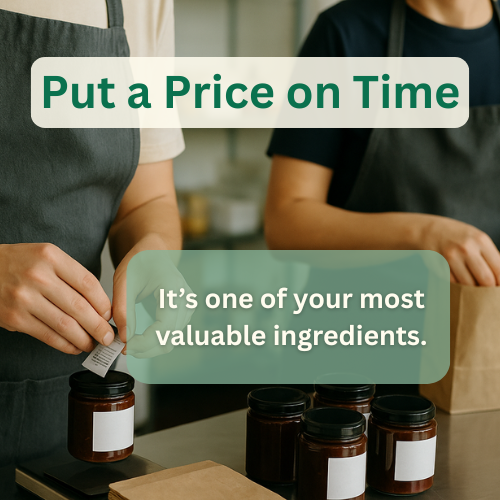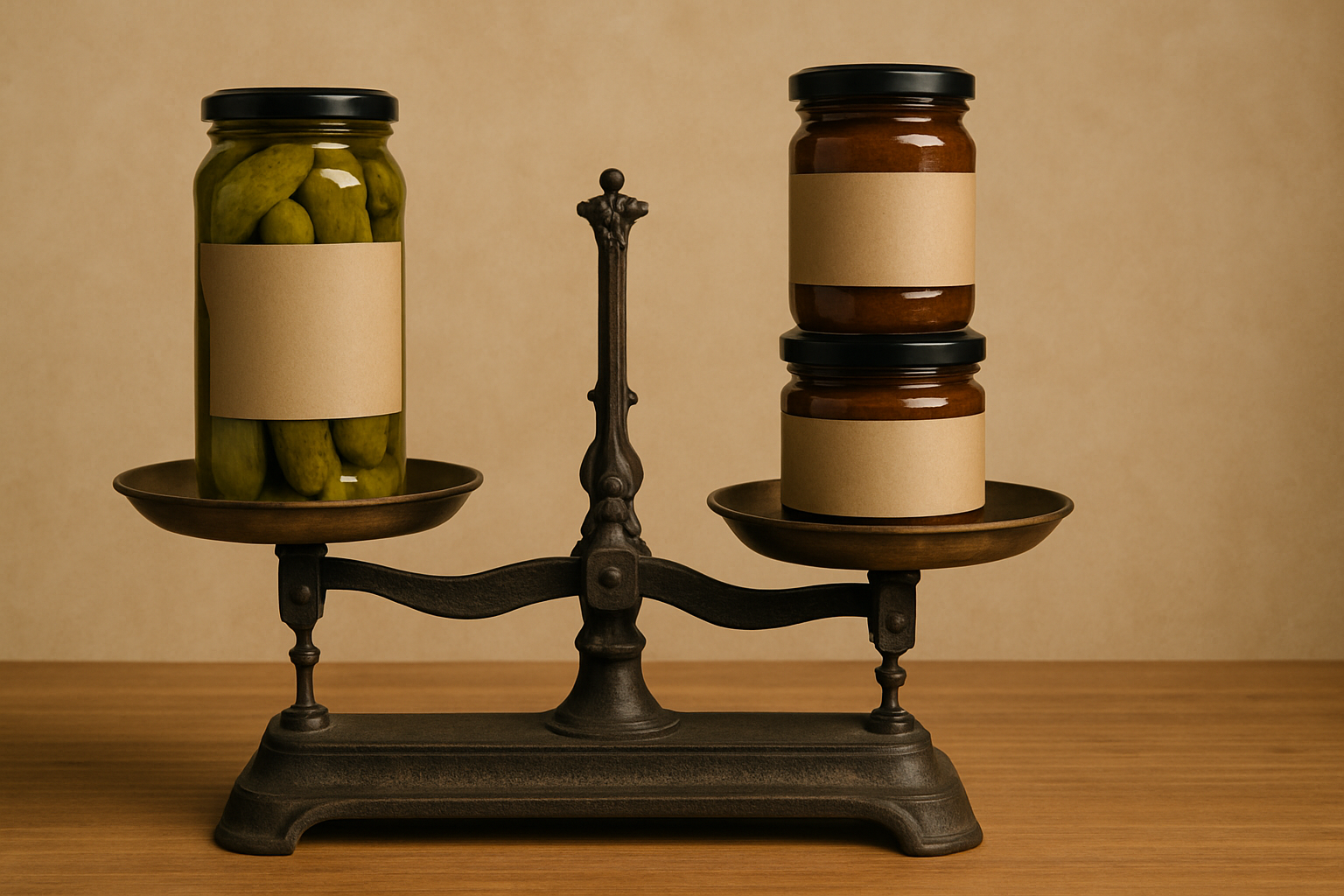1. Why Labor Cost Matters
- Labor is one of your biggest hidden costs.
- If you’re not counting it, your product price may look profitable when it’s not.
- Accurate labor costing helps you:
- Set fair, sustainable prices
- Identify inefficiencies
- Protect your profit margins
2. Method : Time-Based Production
This works best when you’re producing consistent batches.
Steps:
- Track how much you make in a set amount of time (say, 4 hours).
- Add up total wages paid for that period.
- Divide wages by the total number of units produced.
Example:
4 hours × $20/hr = $80
$80 ÷ 200 jars = $0.40 labor cost per jar
Tip: Repeat this a few times and average your results — production speed can vary day to day.
3. Method : Weekly or Payroll-Based
If you produce multiple days per week, take a broader look.
Steps:
- Add up your total production payroll for the week.
- Divide by the total units made that week.
Example:
Weekly payroll = $800
Output = 2,000 units
$800 ÷ 2,000 = $0.40 per unit
This method smooths out fluctuations and shows your true average labor cost.
4. Don’t Forget Owner Labor
If you (or your partners) are doing production, that time counts too.
- Assign yourself a realistic hourly rate, even if you’re not paying it yet.
- Excluding it gives you a false sense of profitability.
- It’s essential for:
- Knowing your true cost of production
- Planning for future hires
- Setting prices that reflect real effort
Example:
If you spend 20 hours a week making product at a $25/hr rate, that’s $500 in weekly labor cost that needs to be included.
5. Review and Adjust Regularly
- Track labor costs quarterly or whenever your setup changes.
- As you grow, automation and volume can lower your per-unit labor cost.
- Use that data to decide whether to raise prices or reinvest in efficiency.
Bottom Line
Labor is one of your most valuable ingredients.
Get it wrong, and your pricing will never make sense.
Get it right, and you’ll know exactly what your product is truly worth — and how to grow profitably.
Before you price your next batch, run your numbers through the GoodsRep Pricing Calculator to get a full picture of your product costs and margins. It’s built to help specialty food producers make smarter, data-driven decisions.



